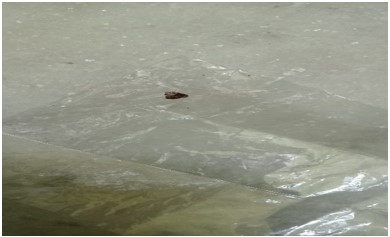A Case Study on Ayurvedic management of Mutrashmari (Urolithiasis)
DOI:
https://doi.org/10.21760/jaims.9.2.48Keywords:
Mutrashmari, Urolithiasis, Viddhakarma, Shamana ChikitsaAbstract
Background: Mutrashmari is disease classified as Asthamahagada which means "difficult to cure." It is Kapha Pradhana Tridoshaja Vyadhi. Due to resemblance in clinical manifestations, Mutrashmari is compared to urolithiasis. Urolithiasis, a pathological condition of the urinary system where aggregation of urinary crystalloids takes place anywhere in the urinary tract, i.e., from the kidney to urinary bladder showing male predominance (Male: female = 3:1) and currently becoming a medico‑surgical and economical challenge for entire health‑care systems. Objectives: The aim of this study was to evaluate the efficacy of Viddhakarma and Shamana Chikitsa in Mutrashmari (Urolithiasis). Materials and Methods: It is a single case study. A 52 years old male patient who was clinically diagnosed case of Urolithiasis before 3 years visited to OPD with complaints of Vrikka Parshava Shoola (Pain in bilateral kidney and b/l flanks region) which was radiating from loin to groin region in late night usually, Mutrakriccha (difficulty in maturation) and Mutradaha (Burning micturition) from last 2 months. The patient was treated with total 4 sittings of Viddhakarma were given at the lateral border of the thumb of the bilateral legs on same day of every week along with Shamana Chikitsa. Results: The patient was showed highly significant results before and after the completion of treatment. All sign and symptoms of patient resolved and there was no trace of calculi in the both kidneys, according to the USG report after 1 month. Conclusion: Highly significant relief in symptoms was seen in patient after 1 month of Ayurvedic treatment.
Downloads
References
Sushruta M, Shastri AD. Ashmarinidana Adhyaya In: Sushruta Samhita. Reprint-2014. Varanasi: Chaukhamba Sanskrit Sansthan; 2014. p. 311. (Kashi Sanskrit Series; vol. 1).
Sushruta M, Shastri AD. Avarniya Adhyaya In: Sushruta Samhita. Reprint-2014. Varanasi: Chaukhamba Sanskrit Sansthan; 2014. p. 163. (Kashi Sanskrit Series; vol. 1).
Agnivesha, M. Trimarmiyasiddhi Adhyaya. In: Shashtri, K.N (ed.) Charaka Samhita. Reprint-2015.Varanasi, India: Chaukhambha Sanskrit Sansthan; 2015. p. 1051.
Sharma A, editor. Ashmarinidanam. Verse 1. In: Text book of Madhavnidan. Vol 1. Pune, India: Chaukhamba Sanskrita Pratishtan; 2007. p. 506.
Available from: http://www.en.wikipedia.org. [Last accessed on 2023 Dec 12]
Kalpana Devi V, Baskar R, Varalakshmi P. Biochemical effects in normal and stone forming rats treated with the ripe kernel juice of Plantain (Musa Paradisiaca). Ancient Science of Life, 3 & 4, 1993, 451 – 461. 4.
Knight J, Assimos DG, Easter L, Holmes RP (2010)."Metabolism of fructose to oxalate and glycolate".
Suman Kumar Mekap, Satyaranjan Mishra, Sabuj Sahoo and Prasana Kumar Panda. Antiurolithiatic activity of Crataeva magna Lour. bark. Indian journal of natural products and resources, 1(2), 2011, 28-33.
Sushruta M, Shastri AD. Ashmarichikitsa Adhyaya In: Sushruta Samhita. Reprint-2014. Varanasi: Chaukhamba Sanskrit Sansthan; 2014. p. 315. (Kashi Sanskrit Series; vol. 1).















